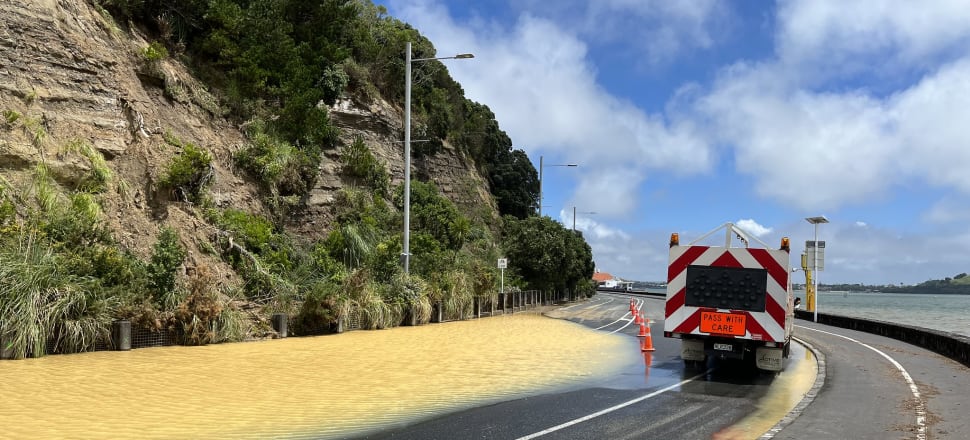
Auckland Mayor Wayne Brown and his council have faced plenty of scrutiny in the wake of the city’s haphazard flood response last month - but central government also needs to review whether its current systems are fit for purpose, Sam Sachdeva writes
Barely a fortnight after catastrophic flooding hit New Zealand’s largest city, the country is again bracing for another burst of bad weather.
It remains to be seen exactly how damaging Tropical Cyclone Gabrielle will prove, but regardless of its impact, politicians and officials alike must have some serious conversations about whether our emergency management system is fit for purpose.
READ MORE: * Government's flood protection plans dry up * NZ needs a new emergency agency: report
That process has already started in Auckland, where embattled mayor Wayne Brown has commissioned an independent review of his council’s response to the flooding.
Brown has justifiably faced criticism for his slow communication on the night flash flooding hit, as well as the delay in declaring a state of emergency (the mayor has apologised for the former, but argued he issued the emergency declaration as soon as officials asked him).
The review is set to report back by March 6, and it would be little surprise if some of the group’s findings echo those from other disaster responses.
The disconnect between regional and central authorities, with ministers and MPs publicly urging Brown to move ahead with a state of emergency, has been seen before.
A review of the emergency response to Christchurch’s deadly February 2011 earthquake outlined the “dysfunctionally divided” nature of local structures, as well as a fragmentation of logistical decision-making between regional authorities, government departments and the national crisis management centre.
John Hamilton, director of the Ministry for Civil Defence and Emergency Management during the 2011 quake, memorably described the mixture of regional emergency management teams with his national unit as “putting a team on the rugby field who have never ever played together before".
“As one submitter noted, ‘Wellington is good at writing guidelines and [regional groups] are good at ignoring them’." - Civil Defence review, 2018
Further concern was sparked by the response to the magnitude-7.8 Kaikōura earthquake in 2016 and fires that blazed through Canterbury in 2017.
Confusion over a lack of tsunami warnings after the quake led to another formal government review, while poor communication and delays with the fire response fuelled calls for change.
The National government had given way to a new Labour-led administration by the time the Kaikōura report came back in early 2018, recommending the creation of a new national agency with stronger powers to better oversee and improve uneven regional responses.
“As one submitter noted, ‘Wellington is good at writing guidelines and [regional groups] are good at ignoring them’,” the report dryly said.
A new National Emergency Management Agency, or Nema, replaced the existing ministry in late 2019 as part of efforts to lift standards and the quality of emergency response leadership around Aotearoa.
The Auckland flooding response suggests there may be some work left to do on that front, while it is unclear why central authorities didn’t use existing powers to declare an emergency themselves if they felt the council was moving too slowly.
That may have been because of the diplomatic dance between the Government and a new mayor who has been quick to take offence, but such niceties must be placed to one side during an emergency.
Law overhaul
A stronger approach could be implemented through a long-delayed legislative overhaul of New Zealand’s emergency management system, set to go before Parliament early this year.
Coming out of the Kaikōura review, which flagged gaps in the current law on who had authority in particular situations, the law change could give Nema’s chief executive the ability to make “emergency management rules” without ministerial sign-off.
Stuff has reported the Government may make further tweaks to the law in the wake of the Auckland floods, giving the agency greater powers in relation to declaring a state of emergency.
Governments have traditionally been reluctant to take too much power away from local authorities when it comes to emergency management, given the importance of local knowledge on the ground, but greater centralisation may help to avoid some of the problems we have seen in recent years.
That is also the case when it comes to risk reduction work, with Cabinet’s 2021 decision to cut back plans for improved flood protection efforts looking even worse with the benefit of hindsight.
With councils already complaining about the financial strain they are under, Prime Minister Chris Hipkins would do well to revisit the idea of a new national funding model for flood risk, even if it’s not necessarily a “bread and butter” policy.
Events like these are going nowhere, and risk reduction is just as important as an emergency response - if not more so.







